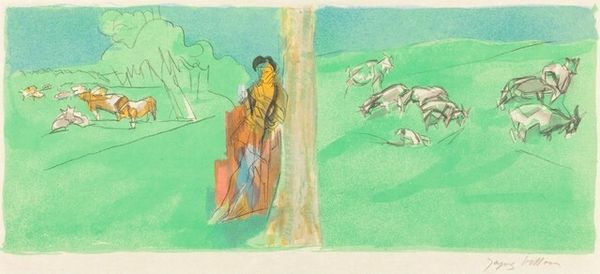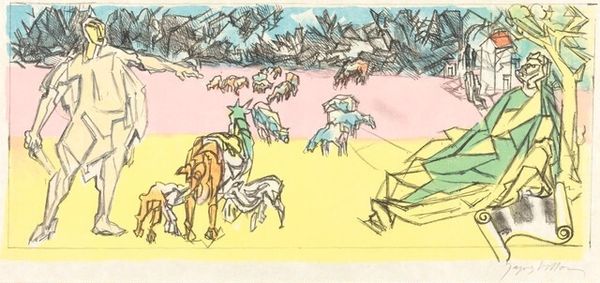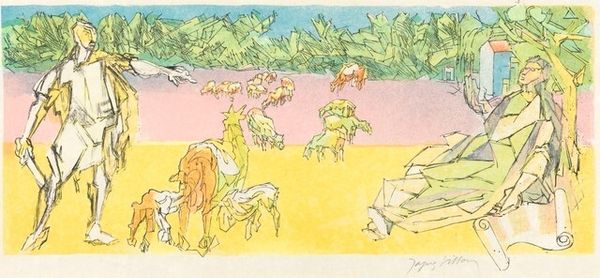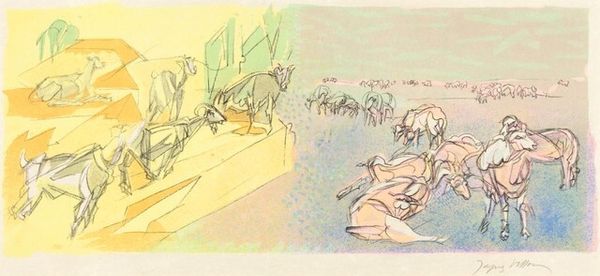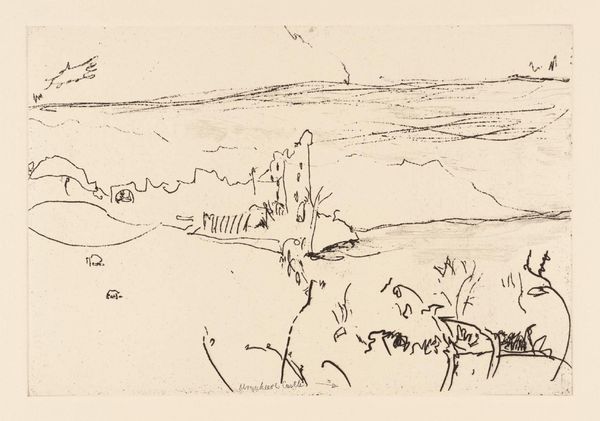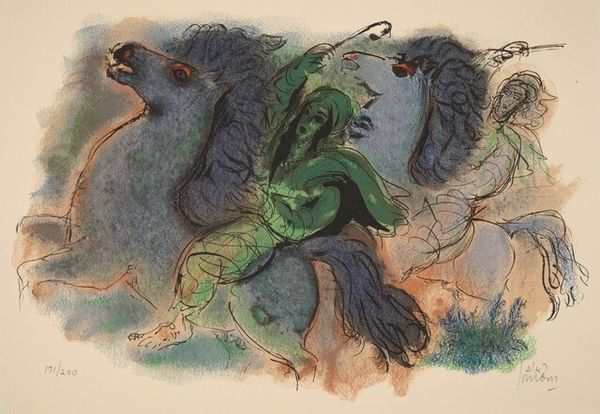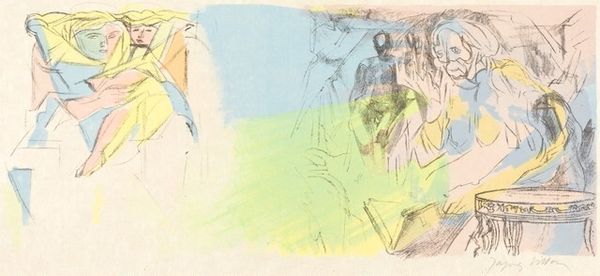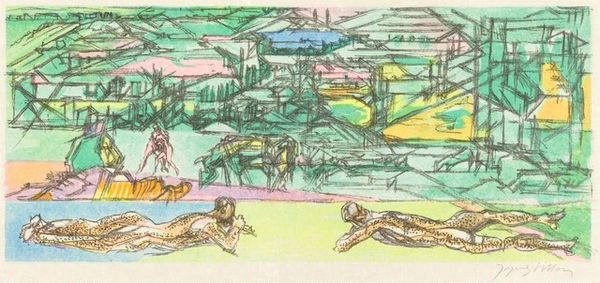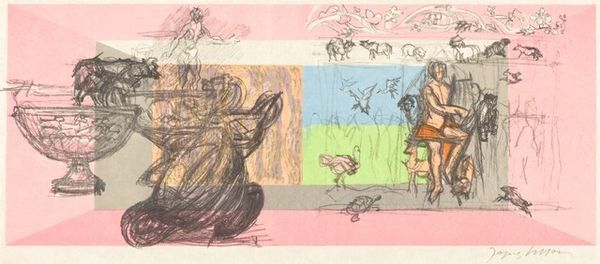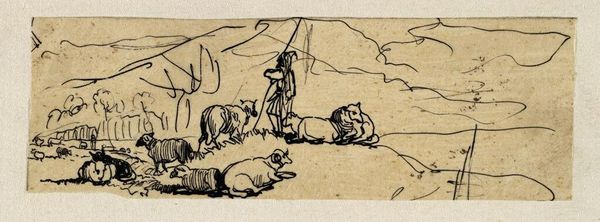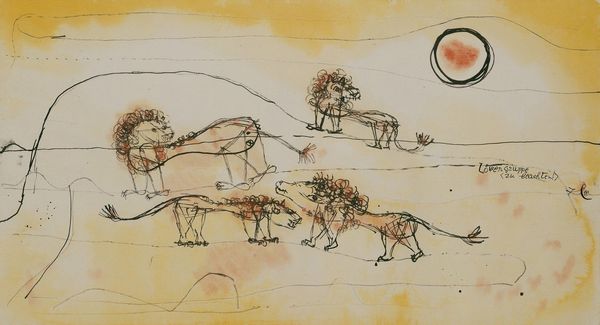
drawing, print, etching
#
portrait
#
drawing
#
cubism
# print
#
etching
#
landscape
#
figuration
#
line
#
modernism
Copyright: National Gallery of Art: CC0 1.0
Curator: This is Jacques Villon's "Second Bucolic: Beautiful Alexis," created in 1955. It’s a print, specifically an etching, and displays a fascinating approach to figuration and landscape. Editor: Well, my initial impression is one of fragmented calm. The etching technique gives it this airy, almost dreamlike quality, despite the rather… unconventional subject matter. There's a man resting and then there is also that group of nude figures near the center, with pigs roaming in between. The human and the animal, it's all so raw and intertwined. Curator: Indeed. Villon was deeply involved with Cubism and the Section d'Or group, and you can see how he applied those principles to traditional genres. He dissected and reassembled forms. The artwork shows an unusual scene that challenges established ideals around nature and leisure during that time. Editor: Looking at the line work, though, you see that it isn't simply about deconstruction. There’s a tangible skill in the execution of the etching. Each line has been purposefully placed and the overall production reveals that labor process. Curator: The title "Bucolic" links it to pastoral themes and ideas about shepherds and idealized nature. However, this is a thoroughly modern take. I interpret the “Beautiful Alexis” figure to reference Virgil’s eclogue of that name, introducing an unexpected classical twist. The nude figures stand out for its engagement with gender dynamics of the period, given the history of women in art and life at the time. Editor: Right, but the social element of it is further exposed via the material process, which makes the finished product possible to possess. We’re discussing it in a museum space where that history and socioeconomic factors have ultimately created the ability to exhibit it, discuss it, and experience it. Curator: A key thing to consider when studying his place in modern art history, however, is his role within a circle of prominent artists during interwar Paris and postwar society as well. The institutional support structures were in place for that to foster work such as this. Editor: Absolutely. I appreciate how examining the medium shines light on those connections and processes too. Thinking about Villon's material methods and the context in which he produced “Second Bucolic: Beautiful Alexis,” really grounds our understanding of this intricate landscape. Curator: Yes, thinking about how Villon's techniques meet tradition is crucial to his enduring appeal. Editor: I agree!
Comments
No comments
Be the first to comment and join the conversation on the ultimate creative platform.
